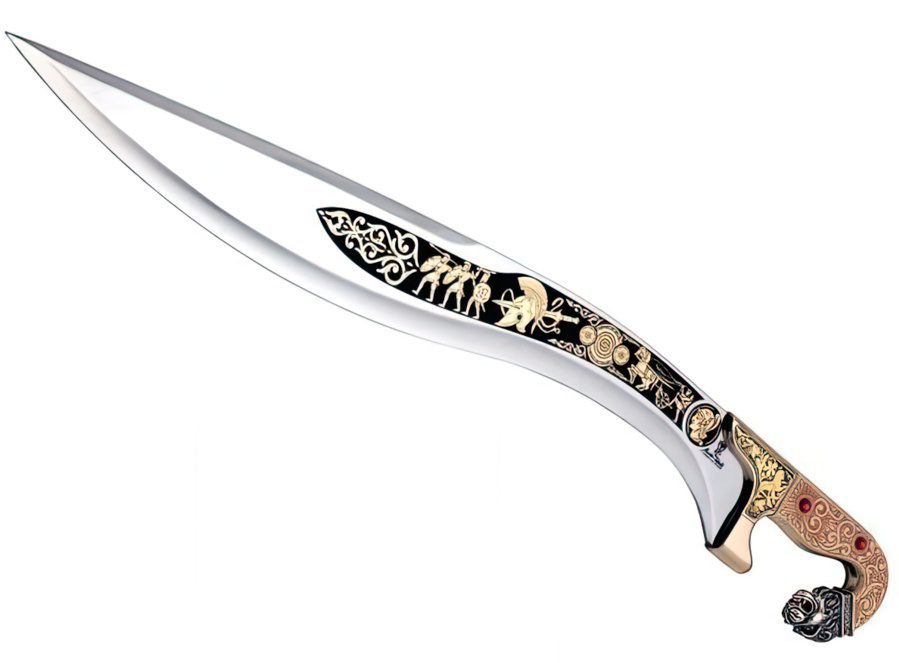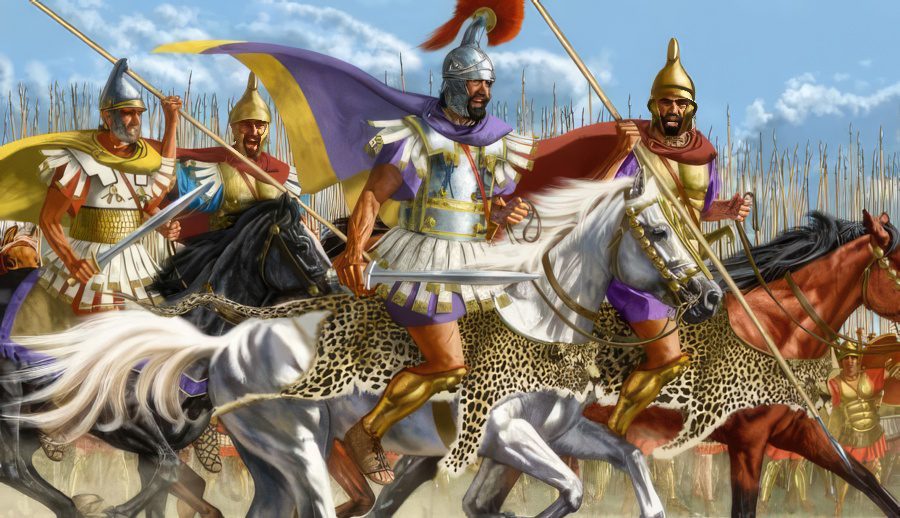What does the Real Alexander the Great Sword Look Like?
NO AI USED This Article has been written and edited by our team with no help of the AI

Alexander the Great’s sword is a legendary artifact that has captivated historians and sword lovers for decades. He was one of history’s most illustrious conquerors, and his sword represented more than just a practical combat and warfare tool.
History buffs have long been intrigued by the rise and fall of great empires, specifically the practice of associating a particular leader’s ascension to power with the brandishing of a legendary sword. Here, we’ll talk about Alexander the Great’s sword, which he carried into combat from the Balkans to the Indus Valley.
After discussing its features, most useful applications, history, and myths, we’ll tell you if it still exists today.
Who is Alexander the Great?

Alexander the Great, ruler of ancient Macedon from 336 to 323 B.C., is famous for expanding his kingdom’s influence far and wide, including subjugating the whole of ancient Greece and defeating the powerful Persian Empire. From a young age, he was profoundly affected by both his father, King Philip II of Macedon, and the ancient Greek philosopher Aristotle. By the age of 20, Alexander succeeded his father as king of Macedon upon the latter’s death.
He then became Alexander III of Macedon and is considered one of the most successful and greatest military strategists in history. Because of how effective his military campaigns were, modern generals still look to his methods for guidance.
Alexander was one of the few generals in history who led his forces into combat and guided them to victory under his direct leadership. On multiple occasions, despite being injured, he still led his troops on horseback into battle. With a sword in his hand to lift the spirits of his allies, he continued to strike fear into the hearts of his enemies.
Characteristics of Alexander the Great’s Sword

The sword of the ancient Macedonian King Alexander was called a Kopis, a type of ancient Hellenic sword. Blades like these were extremely widespread during his lifetime, and they were effective for slicing both on foot and from horseback when used with a shield. It is not to be mistaken with the similar Iberian (Spain) Falcata sword that coexisted at the time.
During his lifetime, Alexander the Great probably used more than one sword in battle. He could very well have used the Xiphos sword too, which is another Hellenic type of blade.
Blade
Alexander had an iron sword with a single-edged blade, meaning it was only sharpened on one side. It had a forward-swept recurve, a fairly common shape in the ancient world, mainly made for powerful hacking and slashing attacks that could damage shields, breastplates, and helmets. The sword’s blade had a sharp and pointy tip which could be used for stabbing as well as thrusts.
The Roman Gladius, which was very effective in battle, had roughly the same blade length as the sword of Alexander, at around 21 to 22 inches (53 to 56 cm).
Guard

Alexander’s sword does not feature a real guard per se, although not many sword from the time did. The main reason behind this is that the weapon of choice was a spear or a large sarissa pike, while swords would be carried on the waists in a scabbard or baldric. This small type of guard could be made out of bronze and served as a hand stopper to the wielder’s hand, although it offered limited protection.
Weight & length

A blade with a belly meant for powerful slashing and chopping attacks must be on the heavy side, despite its smaller length. The most usual length for the sword of Alexander the Great, if he were using a Kopis, would have been in the range of 2 to 2.9 lbs (0.9 to 1.3 kg).
The length of the swords used by Alexander and previous hoplites throughout the Hellenic world was on the smaller side due to the primary use of spears and large shields. The overall length of the sword was around 26 inches (65 cm) long.
Ancient Macedonian warriors are known to have used swords that were the same length as the Spartan sword, but shorter than those used during later periods of the Greek states.
How did Alexander the Great Use His Sword?
Alexander is known as a warrior who personally led cavalry divisions and ranks of soldiers in the majority of his battles. He would have used the long spears, sarissa pikes, or xyston but there were instances where he used his sword. The Kopis or Xiphos, which he would have used, are both very fast and one-handed weapons primarily used for slashing attacks.
Slashing & Chopping

Alexander’s sword would have been an ideal weapon for cutting and chopping. Its recurve design allowed it to be used with more momentum for cutting and causing blunt trauma if hitting a helmet, as the skull was vulnerable to cracking. He also used a Xiphos leaf-bladed sword, which was the better choice when on foot because it could easily thrust while also being an excellent slashing weapon.
Mounted

Alexander the Great was one of the great military leaders that structured calvary battle formations significantly. He is often described fighting from a mounted position taking advantage of his horse’s speed while using his deadly Kopis or Xiphos to excel in battle.
Motivational and Ceremonial
The sword acted as a powerful ceremonial tool linked with nobility long before the time of Alexander III, which was often the motivation behind the speeches given by this great general. With his sword in hand, he motivated his soldiers to carry on fighting to fulfill his plans of victor.
Defeated monarchs showed Alexander respect and humility by giving him swords as gifts. Swords were in their prime during the many fights for throne that stretched from Egypt to Afghanistan and India. King of Kitium Pumiathon, is one such ruler who gave Alexander a sword that the great conqueror carried by his side, as described by Greek philosopher Plutarch.
Where is Alexander the Great’s Sword Now?

The exact location of Alexander the Great’s Sword is unknown because we don’t know exactly what sword is being looked for. Alexander used iron swords, and iron-bladed swords needed much more maintenance, and tended to rust easily if left uncared for. Being in massive battles as Alexander was, he would have used a couple of swords in his lifetime.

Some archeologists call the Vergina sword Alexander’s sword, which was given to him as a gift by a king in Cilicia (Asia Minor) and that currently lies in the tomb of Vergina in Greece. Plutarch described it as a gold-plated weapon that Alexander would use in battles, but he likely used different Kopis and Xiphos swords.

